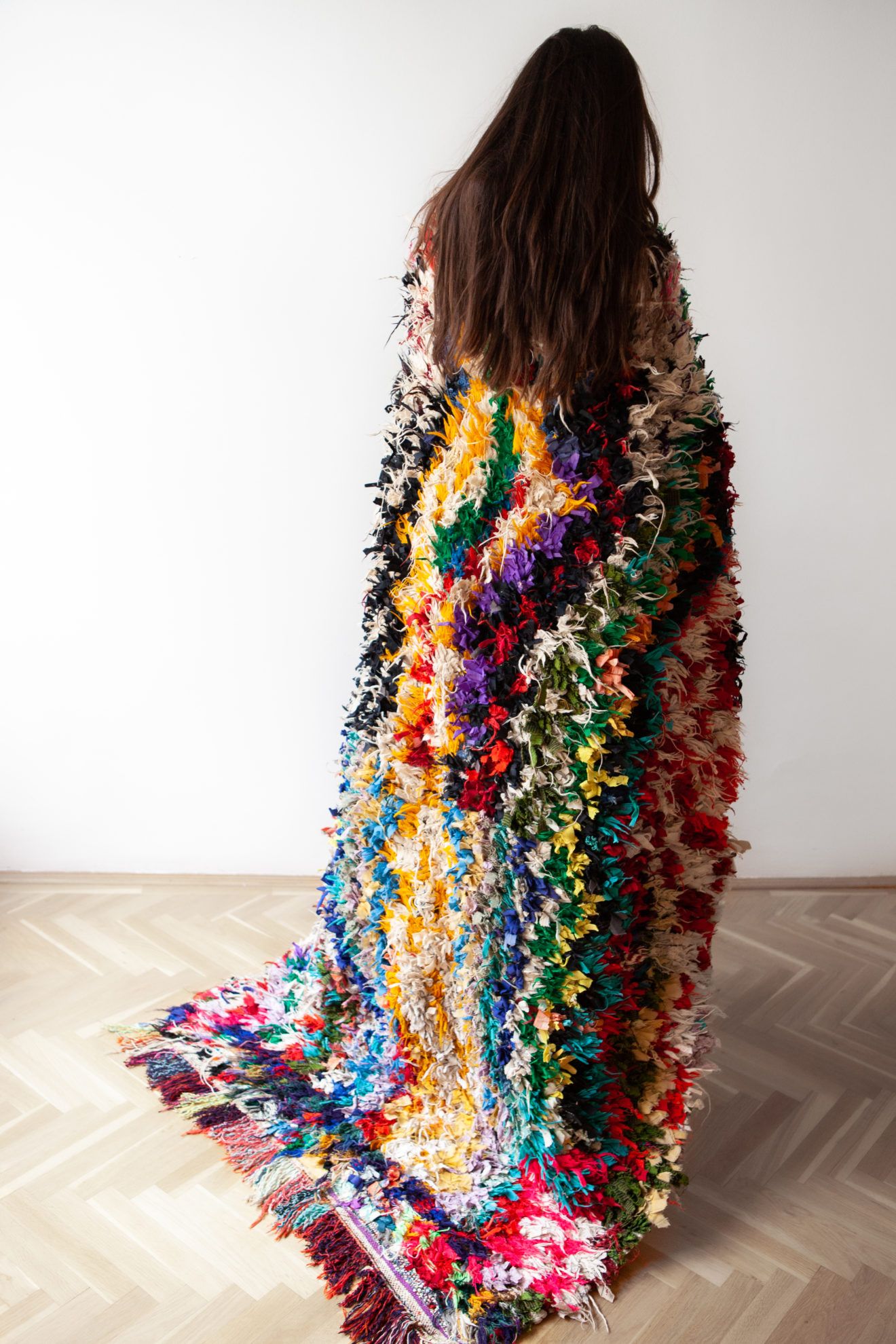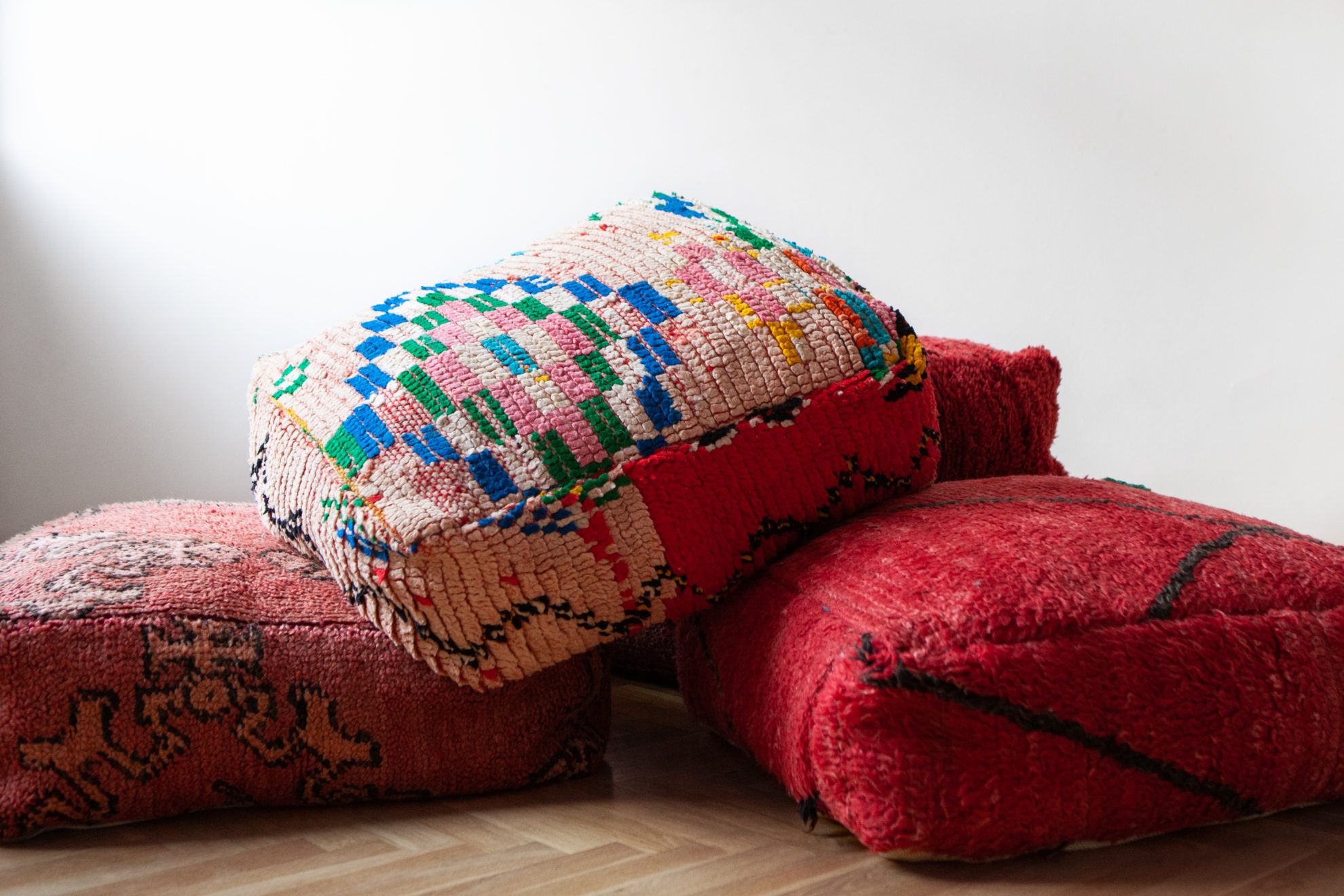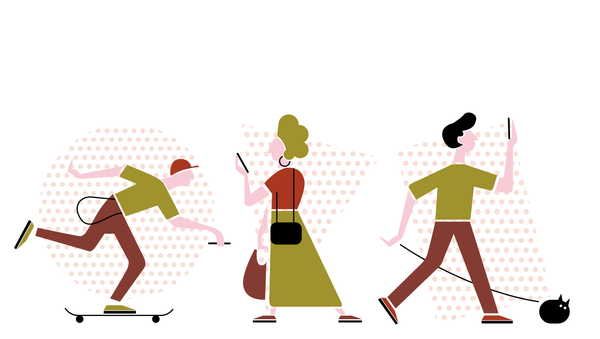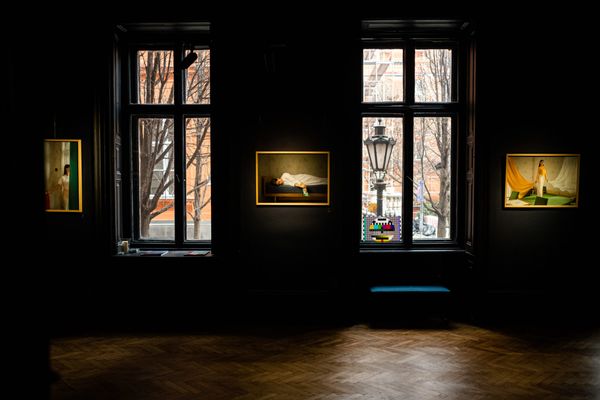It’s surprising how many contemporary links there are in folk arts, and this is especially true for the visual world of Morocco, which keeps being a powerful source of inspiration for Western designers –it simply doesn’t want to go out of style. Thanks to Bori Körösényi, the founder of Berber Budapest (@berberbudapest), we don’t have to travel to Morocco to decorate our homes with a Berber rug, and we can also stay away from using replica. Bori ensures that original rugs coming from the Atlas Mountains spice up the Hungarian design scene: we asked Bori herself about the how.
When and how did the idea ofBerber Budapestcome to life? Did you work in home decoration before this, as well?
My love for Berber rugs is rooted in weaving. I started weaving as a hobby and I am attracted to many things that are related to it. I love the physical attributes of knotted carpets, the feel of organic wool, and the fuzzy, sheepskin-coat like or completely smooth textures. I have already known a part of Berber rugs before, but they really stole my heart when I started to dive into the colors and patterns of the Azilal for one of my own weaving projects.

After some time, I started to look for possibilities to purchase Berber rugs outside of Morocco, and I realized that although they are a hit on the international market, they are quite hard to find in Hungary. This is how it occurred to me last spring how much fun it would be to work on this, but founding the company took much more time.

I have never worked with home deco per se, but visuality has an important role in everything I do. This way, our selection is primarily defined by my own taste and style. I can see that some models, for example the natural colored Beni Ourainsare quite popular – it is no coincidence, as they are beautiful and they look good everywhere, so they form a strong part of our selection. At the same time, I consider the pieces which will only be appreciated by a thin layer at first, but which determine the Berber-image quite much important, too. Luckily, there is no time-pressure, and I hope it will be worth to wait for the Hungarian market to accept a bit more. This idea, however, does not mean that we don’t fulfil individual demands, as we can purchase any design and size.

How does the process of selection and delivery go? Do you have fix suppliers or are you continuously on the lookout for new possibilities? I presume you have to be in Morocco from time to time.
Organizing purchasing and delivery was quite a big task. When we travel, we generally look for destinations and routes where we can get a first-hand experience of the local community and culture, and so the possibility of exploring the Atlas region was quite an appealing option. We have two sons, however, who narrow our possibilities down a bit, and so we have to compress our plans into a shorter period than the ideal.

We have chosen every rug so far individually, we selected them in several rounds. We found marvelous pieces and we left many beauties behind. We tried to keep our requirements in terms of composition, which, of course, didn’t always work. Selecting and bargaining was a huge adventure for us, we got to know incredible people, it still lights me up if I think about it. And then came the less enjoyable part: to leave the rugs purchased there and trust the carrier. Luckily, it all turned out well and everything got here safe and sound.

Purchasing was preceded by several months of preparation. I made a lot of contacts, through whom I could get to know my way around the selection of rugs and prices. At the end, we found fantastic sources, with whom we will be happy to work with in the future, too. It was an important factor to avoid large rug traders and to get as close to the makers of the rugs as possible. We have a lot of plans in this regard for the future.

You have mentioned that you also did some weaving, but where does your attraction to Moroccan style come from?
All in all, I am attracted to old objects with a history and I love placing them into a new context. This is what makes our rugs wonderful: they reflect the personality of the women who wove them, the world surrounding them and they also work well in a modern environment.
This contrast appears on several levels in the case of Berber rugs. They are plain and contemporary pieces, created by Berber women with a technique handed down for thousands of years. Natural colored raw wool and bold neon colors. Precise and finely chiseled compositions with blatant (sometimes intended) “flaws”. They are passionately loud and humble at the same time.

Weaving also helps me appreciate the work invested into each rug. Creating a large hand-knotted rug is a demanding job. They create every knot separately and then they fix the knot-lines with wefts. This work goes better when done in a community: the Berber women weave together similarly to our former weaving communities. I think it’s very interesting that processing wool at home is almost the same in the Carpathian basin as it is in the Atlas Mountains, and even the tools are identical (e.g. manual carding tool).
You only started off recently, so maybe it is not clear yet, but what are your experiences: is there a demand for these rugs besides “fast design“? Did this matter influence your pricing?
Fortunately there are many people who are interested and want to look at the rugs and sales has also started. In our pricing, we took European prices as the basis, and determined a price level 20% lower than that.

I saw that your online store is in progress – when can we expect its opening? Do you plan to create a showroom?
We work a lot on it, and hopefully the website and the online store will be launched in March. We plan pop-up events in the launch period, the first one can be expected in March. In the middle-run, we would also like to have a show room – we are still looking for the perfect location.


HYPE | Weekly program guide

V4PLUS | Our favorite Czech brands_05










